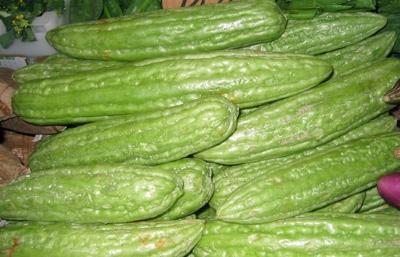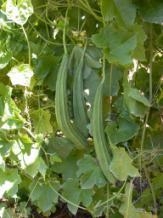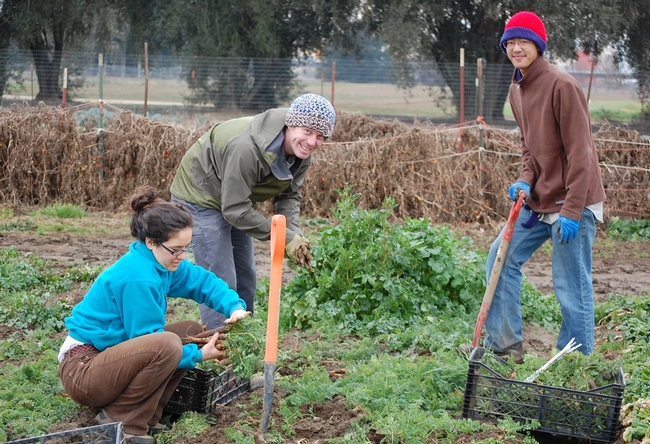UC Food and Agriculture Blogs
Food Safety Modernization Act
How can I begin to describe the draft regulations for the Food Safety Modernization Act (FSMA)?
On January 4, 2013, FDA came out with two sets of proposed rules, stating that comments from the public are due by May 16, 2013. One set of proposed rules relates to processed foods and the other one to produce. There are three additional sets of proposed rules yet to come; they are related to: imported produce and other foods; accreditation of third-party auditors in other countries; and preventive controls at animal food facilities that are similar to those proposed for human foods. For now, I am limiting my commentary to the produce-related rules.
This proposal applies to the produce industry (including farmers) and is called the Standards for Growing, Harvesting, Packing and Holding of Produce for Human Consumption Proposed Rule (144 pages); it focuses on areas of risk for fruit and vegetable production, including agricultural water; biological soil amendments; health and hygiene; domesticated and wild animals; and equipment, tools and buildings.
The FDA estimated that 1.75 million cases of foodborne illness would be prevented annually by this regulation, with an annual benefit of $1.04 billion. They estimated that compliance with the proposed rule will cost domestic farms $459.6 million. The estimated average annual cost for very small farms (less than $250,000 in annual revenues) is $4,697, $12,972 for small farms (between $250,000 and $500,000 in annual revenues) and $30,566 for large farms.
Reading through the proposed rules is not a simple process. I suggest starting with the published summary, which is available at:
http://www.fda.gov/Food/FoodSafety/FSMA/ucm334114.htm?source=govdelivery
Small farms would be eligible for the qualified exemption; they must meet all of the following conditions during the 3-year period preceding the applicable calendar year:
1. Their average annual revenues were less than $500,000 (adjusted for inflation);
2. Their average annual revenues from products sold directly to consumers, stores and restaurants exceeded the average annual revenues of the farm’s sales to all other buyers;
3. Their direct market sales occurred in the same state as the farm, or within 275 miles of the farm (whichever is greater); and
4. The name and complete business address of the farm where the produce was grown are conspicuously displayed at the point of purchase, if the produce is not otherwise labeled.
I will be back with more information regarding the FSMA’s proposed rule for produce by the end of February.
Shermain Hardesty, shermain@primal.ucdavis.edu
CDFA Food Safety Cost Reimbursement
Small-scale growers can get reimbursed for part of their food safety audit, testing, or training expenses.
California’s Department of Food and Agriculture (CDFA) has a reimbursement program to assist specialty crop producers with the cost of first time food safety audits, informational assessments, water and/or soil testing, and training regarding Good Agricultural Practices (GAPs). Small-scale growers can be reimbursed for up to $200 for these expenses.
To request a reimbursement, growers should download the application form, complete it, and mail it to CDFA as indicated on the form. Only completed applications with original signatures will be processed. Funds are available on a first come, first serve basis until the funds are depleted, or July 31, 2013.
UCCE makes Southeast Asian vegetables easy to eat
Most Americans gravitate toward the familiar in supermarket produce aisles. But some creative shopping unveils a tremendous diversity of edible vegetables that can turn an ordinary menu into a much more interesting cuisine.
At certain roadside stands, at farmers markets that cater to diverse clientele and in small Asian supermarkets, adventurous Californians can buy vegetables like bitter melon, Chinese long beans, opo and luffa. Finding them is the first step, knowing how to prepare them is another matter. UC Cooperative Extension has made these less familiar vegetables more accessible by creating a collection of easy-to-cook and nutritious Southeast Asian vegetable recipes.
The recipes were developed by UCCE nutrition educators in Fresno and the statewide UC Expanded Food and Nutrition Education Program team with Richard Molinar, a UCCE advisor in Fresno County. Connie Schneider, director of the UC Youth, Families and Communities Program, and Molinar started by researching the traditional usage of Asian vegetables. They modified some ingredients and procedures in the recipes to simplify preparation and improve the nutritional profile.
“We minimized the number of ingredients in each recipe, added clear measurements and tested the dishes,” Schneider said. “They are delicious.”
For the last 18 years, Molinar has worked with small-scale farmers in Fresno County, which boasts the largest concentration of Hmong farmers in the U.S. Fresno County is also home to farmers of other ethnicities from Laos, China and Vietnam. Molinar and his assistant, Michael Yang, have introduced Southeast Asian immigrant farmers to the latest farming technologies, helped them develop plans to ensure the safety of the food they grow, and worked with them to find new marketing opportunities. Many of these farmers have begun growing vegetables common in California, and most have also kept some space on the farm for the vegetables of their homelands.
The UCCE educators recognized that the rich culinary traditions of local Southeast Asian immigrants could be adapted and used by people of all cultures to increase their consumption of vegetables. Besides, encouraging consumption of Southeast Asian vegetables adds new marketing opportunities for the farmers.
“This has been a unique opportunity to bring UCCE’s farm advisors and nutrition educators together to assist farmers and the public,” Molinar said. “These recipes will encourage more people to buy these nutritious vegetables, expanding the market for the growers.”
The 12 recipes are printed on cards, each with photos of the fresh vegetable and background information. For example, the recipe card for “bitter melon stir fry” notes that the crinkly skinned vegetable is native to India and is eaten when young and green, as bitterness increases with age. The recipe is accompanied by a photo of the prepared dish and complete nutrition facts per serving.
Most people are familiar with luffa after it has dried into a natural scrubby. It is often found near beauty products in stores and purchased to exfoliate the skin. However, the UCCE recipe card for “luffa and prawns” notes that fresh green luffa has a similar but sweeter flavor than zucchini summer squash when stir fried. Either the smooth or angled varieties of luffa can be used in the recipe.
"I grew up with zucchini," Molinar said, "but I prefer the flavor and texture of angled luffa."
The printed cards will be distributed at farmers markets where Southeast Asian vegetables are sold, and they are available on the Fresno County UC Cooperative Extension website. Farmers who sell Asian vegetables at farmers markets may pick up 10 packets of recipes for free at the UC Cooperative Extension in Fresno, 1720 S. Maple Ave., Fresno. Direct links to each of the recipes are below:
- Bitter Melon Stir Fry
- Chinese Long Bean and Tofu Salad
- Chinese Winter Melon Chicken Soup
- Field of Greens Salad
- Fuzzy Gourd Stuffed with Pork and Mushrooms
- Lemongrass Chicken Soup
- Luffa and Prawns
- Marinated Japanese Eggplant
- Opo and Beef
- Snow Pea Daikon Salad
- Strawberry Spring Rolls
- Spicy Shrimp and Bok Choy Noodle Bowl
Following are two sample recipes:
Bitter Melon Sir Fry
Serves 4
Ingredients:
1 ripe bitter melon, seeded and sliced
1 tablespoon olive oil
1 onion, diced
3 garlic cloves, crushed
½ lb. ground pork
½ lb. medium shrimp, peeled and deveined
1 tomato, chopped
1 tablespoon reduced sodium soy sauce
Pepper to taste
Directions:
- Place sliced bitter melon in boiling water until just tender (2-3 minutes). Drain
- Heat olive oil in skillet over medium heat. Sauté onions for about 5 minutes until tender.
- Add garlic; sauté an additional 2 minutes; mix in pork and cook until no longer pink.
- Add shrimp; cook about 5 minutes until done.
- Add tomato, bitter melon, and soy sauce; cook until tender.
Luffa and Prawns
Serves 4
Ingredients:
1 tablespoon vegetable oil
1 garlic clove, minced
1 lb large prawns, peeled and deveined
2 luffa (angled luffa or smooth luffa), chopped
¼ cup bamboo shoots
1 teaspoon coriander
1 tablespoon reduced sodium soy sauce
1 green onion, sliced
Directions:
- Heat oil in a wok/pan; add garlic and stir fry for 1 minute.
- Add prawns; cook until done
- Add luffa; continue to stir fry with prawns until just tender, about 5 minutes.
- Add bamboo shoots, coriander, and soy sauce to pan and stir fry a few minutes
- Sprinkle with green onion and serve.
Videos explore the future of farming
Pop quiz: About 7 billion people live on earth today, and that number is expected to hit 9 billion by 2050. That’s a lot of mouths to feed. What’s the best way to reform our global food production to meet the rising demand?
- Invest in technology, plant breeding, soil science and seed genetics to make our finite farm land more productive.
- Increase sustainability, so farm land can remain productive in the future.
- Encourage more people to get into farming.
- Help farmers manage climate change, water supply and pest control.
- All of the above and a whole lot more.
Yep, the answer is e. All of the above and a whole lot more. Many of the challenges and solutions are explored in a new video series on YouTube called "9 Billion Mouths to Feed: The Future of Farming."
Produced by UC Davis in cooperation with University of California’s "UCTV," the four 10-minute videos provide an excellent overview of modern problems facing our food supply.
"There’s a growing population and we’re going to need to produce more food in a sustainable way to feed them all," says Genevieve Lipari, a UC Davis student featured in the videos. “And it’s not just agriculture, it’s food access, health, nutrition and so much more.”
Indeed, agriculture isn’t just about sowing the land. The videos bring that fact to life, showing the work California farmers and UC Davis students and researchers are doing to ensure an abundant food supply that’s healthy, tasty and safe.
The videos are perfect for students young and old, and anyone interested in finding innovative ways to feed the world without depleting our limited resources.
We might not have all the answers on how to feed a growing population, but the videos shine light on some of the many farmers, scientists and students working together to try to meet that growing need.
You can watch “9 Billion Mouths to Feed” at www.uctv.tv/farming
Super ways to eat healthy on game day
Super Bowl Sunday is one of the biggest eating days of the year — right up there with Thanksgiving.
Enjoy the party without over indulging. Here's how:
Pre-game warm-up: Eat a healthy breakfast and lunch or snack before you head to the party. Skipping meals to “save up” your calories for the big event backfires when you over eat because you are so hungry.
Think like a winner: Focus on the game and enjoying your friends, rather than on the food.
Have a game plan: Take a look at the food spread before digging in. You don't have to eat some of everything — choose 2 to 3 foods you really like — maybe something you seldom eat (you can eat chips anytime). Take small servings then fill up your plate with healthy items like fruit and veggies (but go easy on the dip — just 1 tablespoon typically has a 100+ calories!)
Follow a winning strategy: Eat mindfully — think before you put something in your mouth. After serving your plate, move away from the buffet table where it's easy to eat lots of guacamole and chips (without even thinking about it) while you're standing there watching the game.
Take a break at half-time: Grab a friend or two and take a walk in the neighborhood. You'll gain energy and be ready to tackle the second half of the party.
Keep advancing toward the goal line: Regular soda, lemonade, beer and cocktails can add lots of extra calories. Drink light versions of your favorite beverages. If you indulge in cocktails, limit the calories by limiting yourself to two drinks — one each half, and drink water the rest of the time.
Avoid time-outs: Don't let food-borne illness ruin your game. Avoid eating perishable foods that have been left out at room temperature for more than two hours. That includes things like chicken wings, nachos with chicken or beef, barbeque sliders, dips made with sour cream, and cut fruits and vegetables (unless served on ice).
Score the winning touchdown! Make healthy choices and have a great time.
How do you put on a Super Bowl spread that's healthier for your family?







